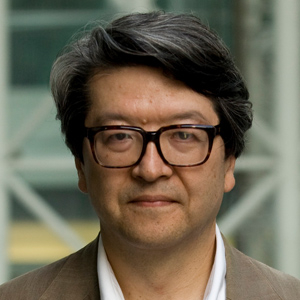- Article
- Macroeconomics, Economic Policy
4. An Inconvenient Truth about Financial Markets
May 13, 2010
A Trade-Off between Efficiency and Stability
So whose view of speculation comes out ahead, Friedman's or Keynes'?
The answer is obvious. Although Friedman advanced his theory of stabilizing speculation to make the case for flexible rates in foreign exchange markets, he was implicitly assuming a kind of market, such as that for apples or cabbages, where speculators buy produce directly from producers and sell it directly to consumers. In such idyllic markets, speculation may indeed contribute to stability. There is, however, no reason why speculators should not trade with each other. As soon as they start to trade among themselves, they have to play the battle of wits, setting in motion the bootstrapping process of the Keynesian beauty contest. Indeed, once we come to markets for financial derivatives, such as bond futures, stock options, and interest rate swaps—which have securitized the risks arising from the very financial markets that securitized the risks associated with production, consumption and other real economic activities—the participants are almost exclusively professional speculators who have little choice but to trade with each other.
The history of financial markets is as old as the history of capitalism itself. 1 Even futures markets have existed for centuries. For example, the Dôjima Rice Exchange in Tokugawa Japan had already developed by the early eighteenth century a complex trade system of rice-futures. But the markets for financial derivatives are much younger; the first was the International Monetary Market that deals with foreign currency futures in the Chicago Mercantile Exchange (CME). It was created in 1972 by CME chairman Leo Melamed, an ardent disciple of the free market philosophy of Milton Friedman, with much encouragement from Friedman himself. 2 Subsequently, there has been a rapid expansion in both the number and the volume of financial derivatives markets, propelled by the strong currents of laissez-faire thinking that came in with the Reagan-Thatcher era, and assisted by the development of capital asset pricing models, option-pricing models, and other mathematical finance models that functioned as sophisticated applications of neoclassical general equilibrium theory. Ironically, it was this free-market development that ultimately proved the correctness not of Friedman’s Darwinian theory of stabilizing speculation, but of Keynes’ beauty contest theory of destabilizing speculation.
Here emerges an “inconvenient truth” about capitalism—there is an inevitable trade-off between efficiency and stability in financial markets.
The original function of financial markets was to improve the efficiency of the capitalist economy by providing producers and consumers with opportunities to diversify the risks they inevitably incur in dealing with the real economy. But this is possible only because of the participation of a great number of professional speculators willing to take risks in the hope of making large profits—in contrast to ordinary producers and consumers, who participate precisely because they do not want to take such risks. The social object of these professionals should therefore be, as Keynes put it, “to defeat the dark forces of time and ignorance which envelope our future.” (p. 155.) However, as soon as these professional speculators start the battle of wits among themselves, the bootstrapping process of the Keynesian beauty contest sets in and exposes financial markets to the larger-scale risks of bubbles and busts. It was this inherent instability of financial markets that came into clear view with the US subprime mortgage meltdown of 2007.
But the present paper does not finish here. If the instability of capitalism could be reduced entirely to a Keynesian beauty contest among professional speculators in financial markets, there would be little need for the “Second End of Laissez-Faire” to be written. The instability could still be regarded as a trembling, albeit quite a jerky trembling, of the “invisible hand” of the price mechanism. After all, financial markets are derivatives—and financial derivatives markets derivatives of derivatives—of real economic activities. Aren’t these professional speculators just greedy, short-sighted, and overly competitive barbarians living in the jungle of Wall Street, as opposed to the ordinary producers and consumers who diligently toil and labor every day on Main Street? Now that they have been named as the chief culprits of the ongoing market failure, all we have to do is confine them within a cage of legal regulations and tame their wild behaviors by governmental supervisions, and we will be able to restore the financial markets to their original function of diversifying risk—at least partially. And then neoclassical economic theory will be free to reemerge, with its core teaching—the self-regulating force of the price mechanism—essentially intact.
I, however, do not believe that the instability of capitalism can be reduced entirely to the instability of a Keynesian beauty contest among professionals speculating in financial markets. On the contrary, I am now going to argue that under capitalism everybody, even ordinary consumers and producers, inevitably lives the life of a speculator, because to hold “money”—the lifeblood of capitalism—is itself nothing but the purest form of speculation.
1 Werner Sombart, The Quintessence of Capitalism, New York: Howard Fertig, 1967; Fernand Braudel, Civilization and Capitalism, (3 Volumes), New York: Harper and Row, 1979; Niall Ferguson, Ascent of Money: A Financial History of the World, New York: Penguin, 2008.
2 http://www.leomelamed.com/essays/07-Friedman-oral.htm

